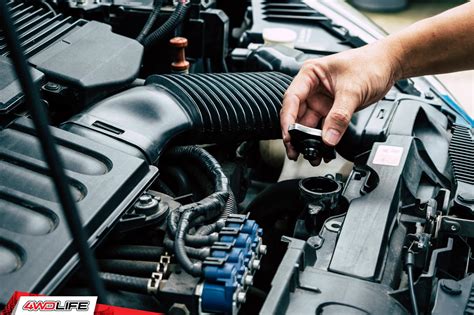How to Put Coolant in Your Car: A Step-by-Step Guide
Adding coolant to your car's cooling system might seem daunting, but it's a straightforward process that can prevent serious engine damage. This guide will walk you through the steps, ensuring you do it safely and correctly. Knowing how to check and top off your coolant is a crucial part of basic car maintenance.
Before You Begin: Safety First!
Important: Before you start working on your car, always ensure it's completely cool. Attempting to add coolant to a hot engine is incredibly dangerous and can lead to severe burns. Wait at least an hour after turning off the engine before proceeding.
You'll also need the correct type of coolant for your vehicle. Consult your owner's manual to determine the recommended coolant type and mixture. Using the wrong coolant can damage your engine. Generally, you'll find either a 50/50 pre-mix or concentrate that needs diluting with distilled water.
Gather your supplies:
- Correct type of coolant: Check your owner's manual.
- Funnel: This prevents spills.
- Clean rags or paper towels: For cleaning up any spills.
- Gloves: Protect your hands from the coolant.
- Owner's Manual: Essential for specific instructions for your vehicle.
Locating the Coolant Reservoir
The coolant reservoir is usually a translucent plastic tank, often located near the radiator. It's typically labeled with a graphic of a radiator or the word "Coolant." If you're having trouble finding it, refer to your owner's manual.
Identifying the Low Coolant Level
Check the coolant level markings on the reservoir. Most reservoirs have "MIN" and "MAX" lines. The coolant level should be between these lines. If it's below the "MIN" line, you need to add coolant.
Adding Coolant to Your Car
- Open the coolant reservoir cap carefully. Some caps might require a twist and a lift, while others might simply twist off. Never open the radiator cap directly, as pressurized coolant can cause serious burns.
- Use a funnel. Insert the funnel into the reservoir opening to prevent spills.
- Slowly add coolant. Pour the coolant into the reservoir, keeping an eye on the level. Avoid overfilling, as this can be just as detrimental as underfilling. Aim to bring the level to the "MAX" line.
- Check the level again. Once you've added coolant, carefully remove the funnel and replace the cap securely. Recheck the level to ensure it's within the acceptable range.
- Clean up any spills. Wipe away any spilled coolant with a clean rag or paper towel.
After Adding Coolant
After adding coolant, it's a good idea to monitor your engine's temperature gauge for a while to ensure everything is working correctly. If you continue to notice low coolant levels, there might be a leak in your cooling system which requires professional attention.
Regular Coolant Checks
Regularly checking your coolant levels is crucial for preventative maintenance. Make it a part of your routine car maintenance checks. Early detection of low coolant levels can prevent significant engine damage and costly repairs.
Remember: If you are unsure about any part of this process, it is always best to consult a qualified mechanic. This guide is for informational purposes only and should not replace professional advice.
